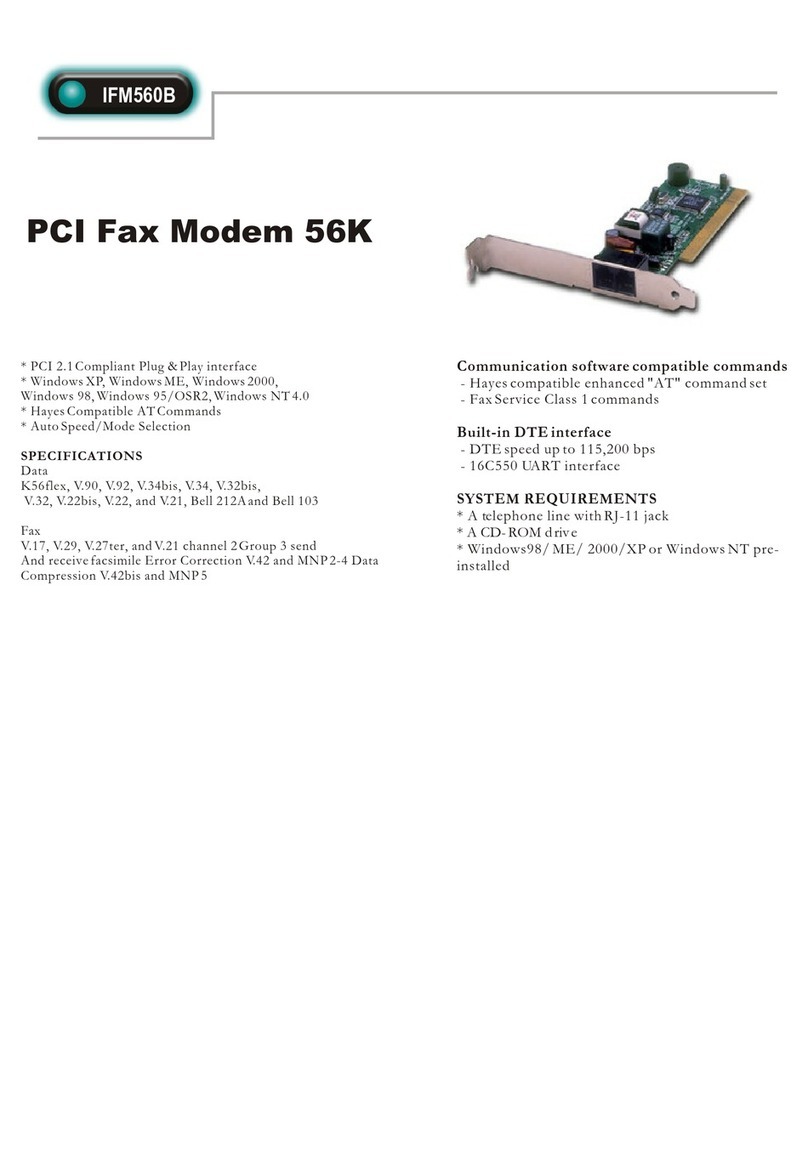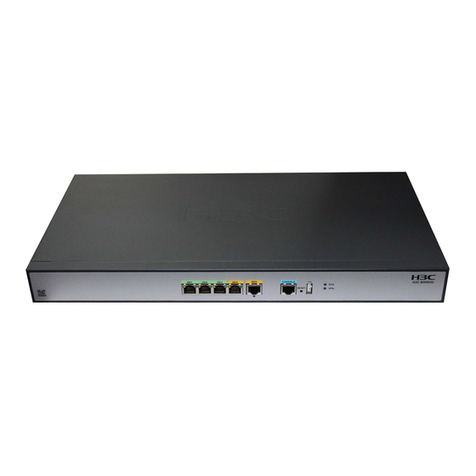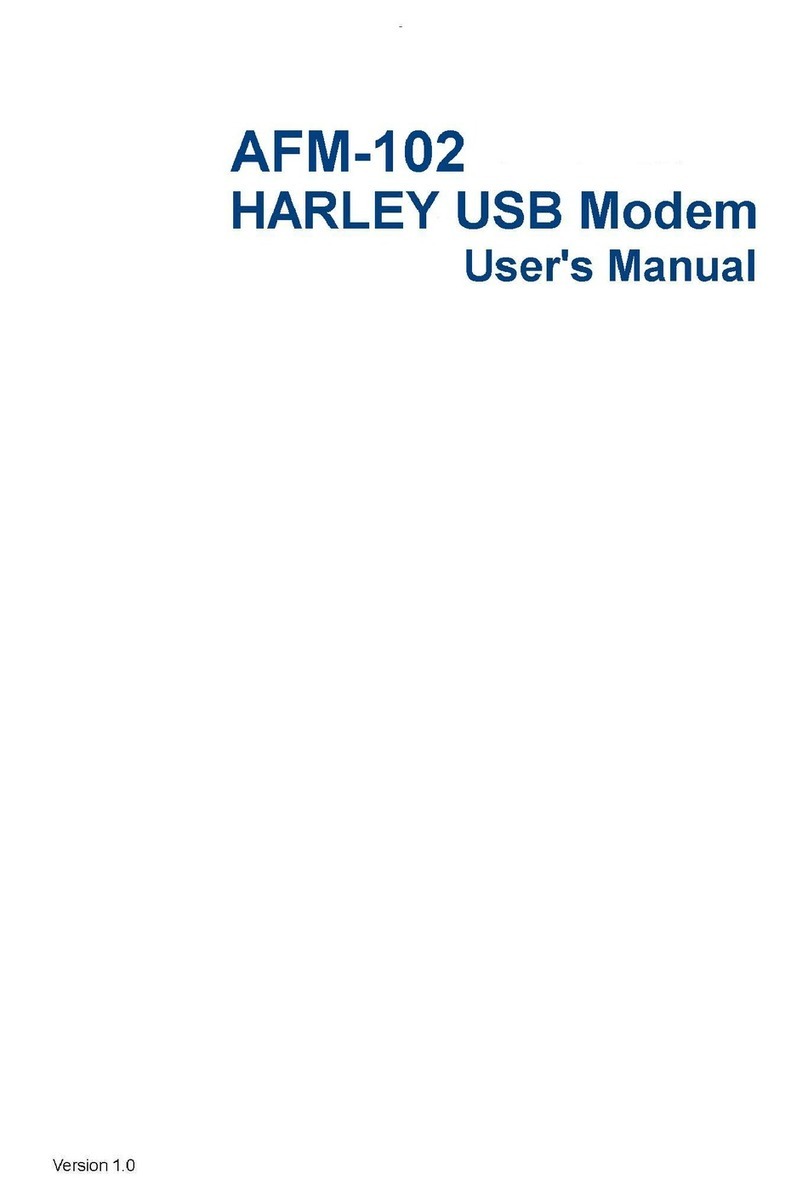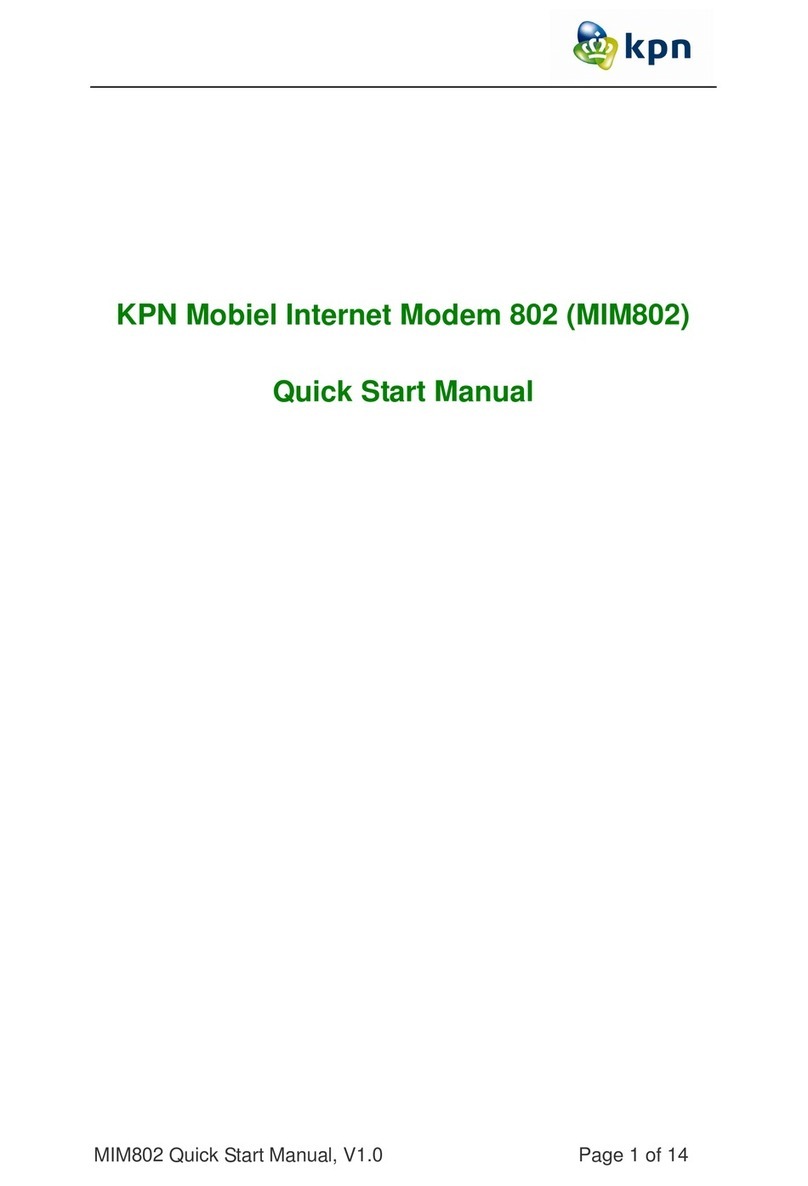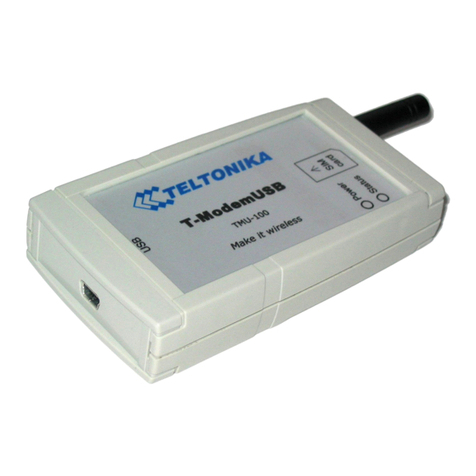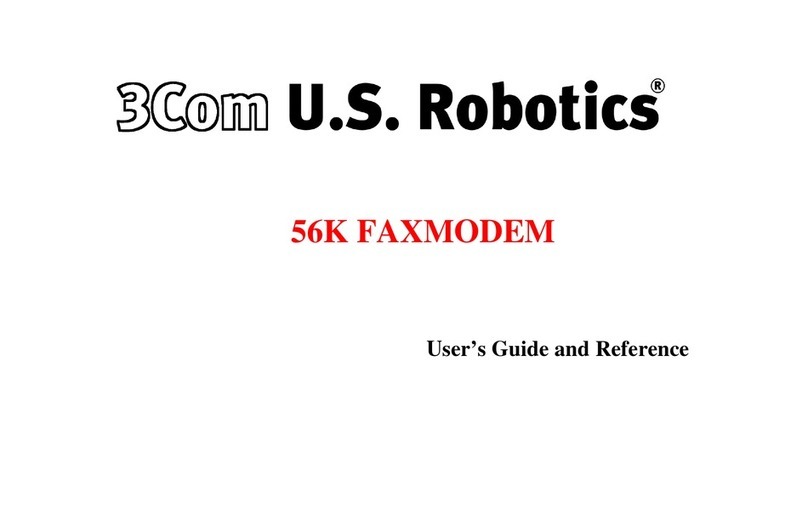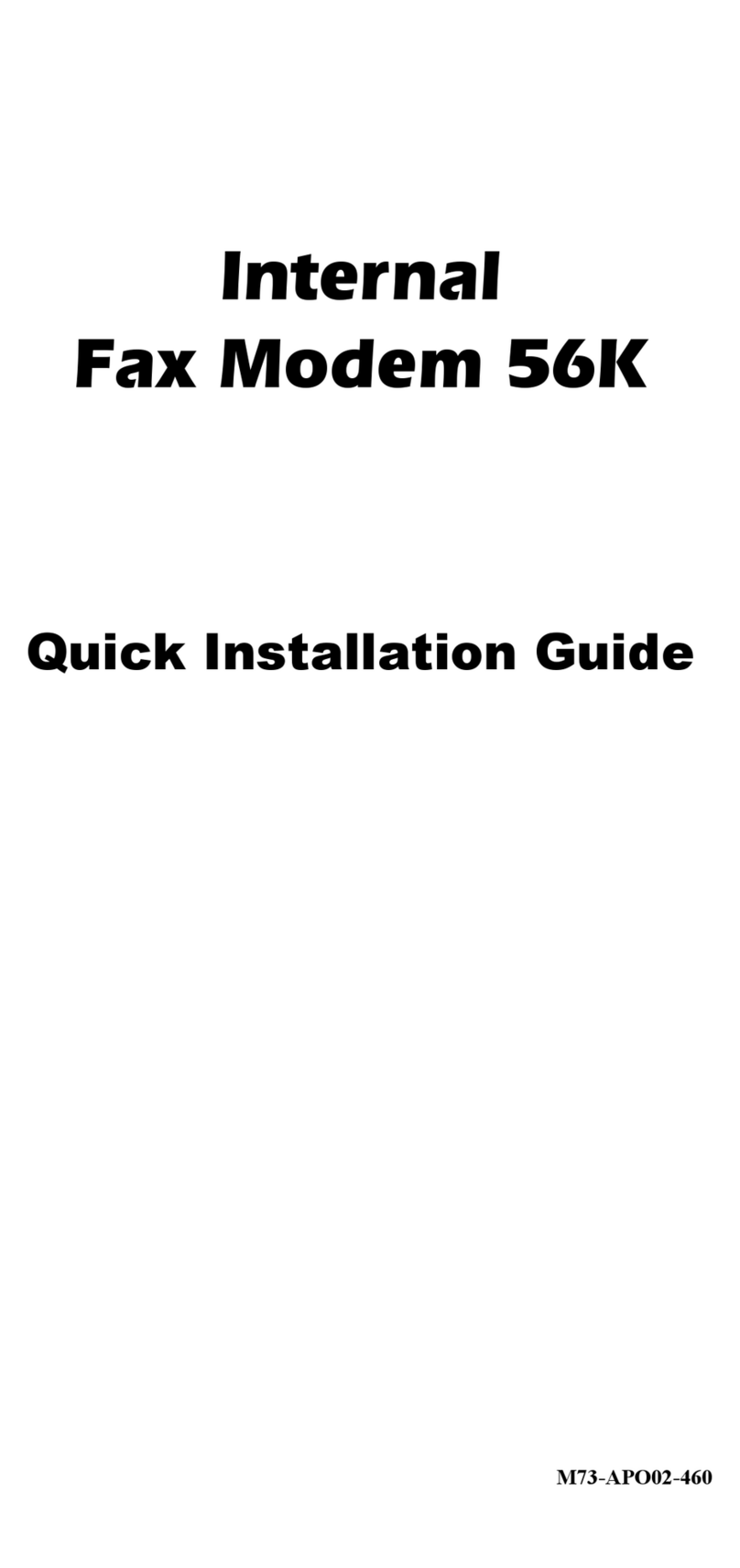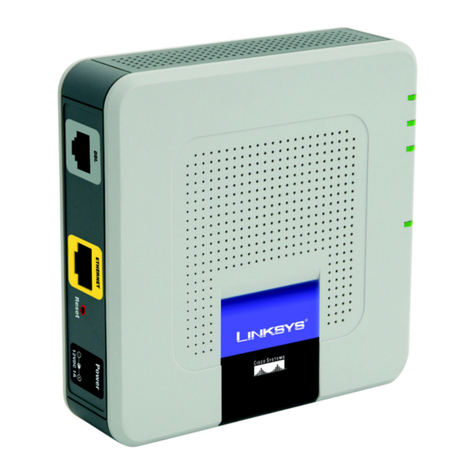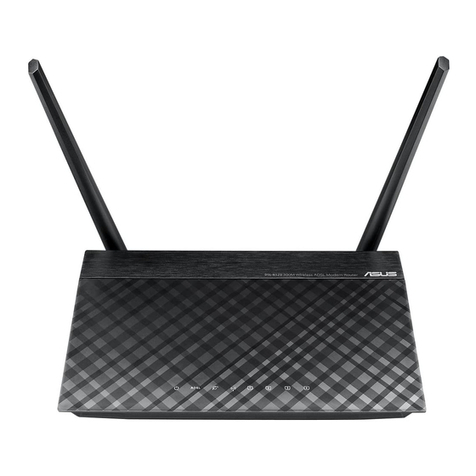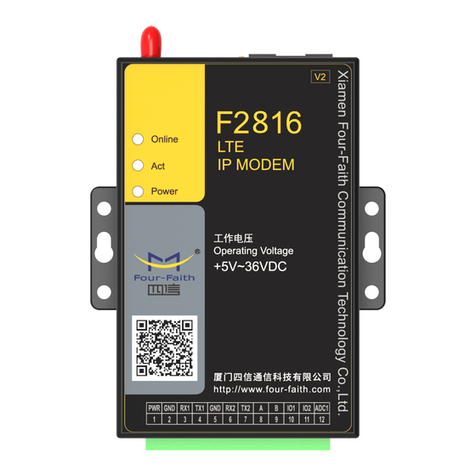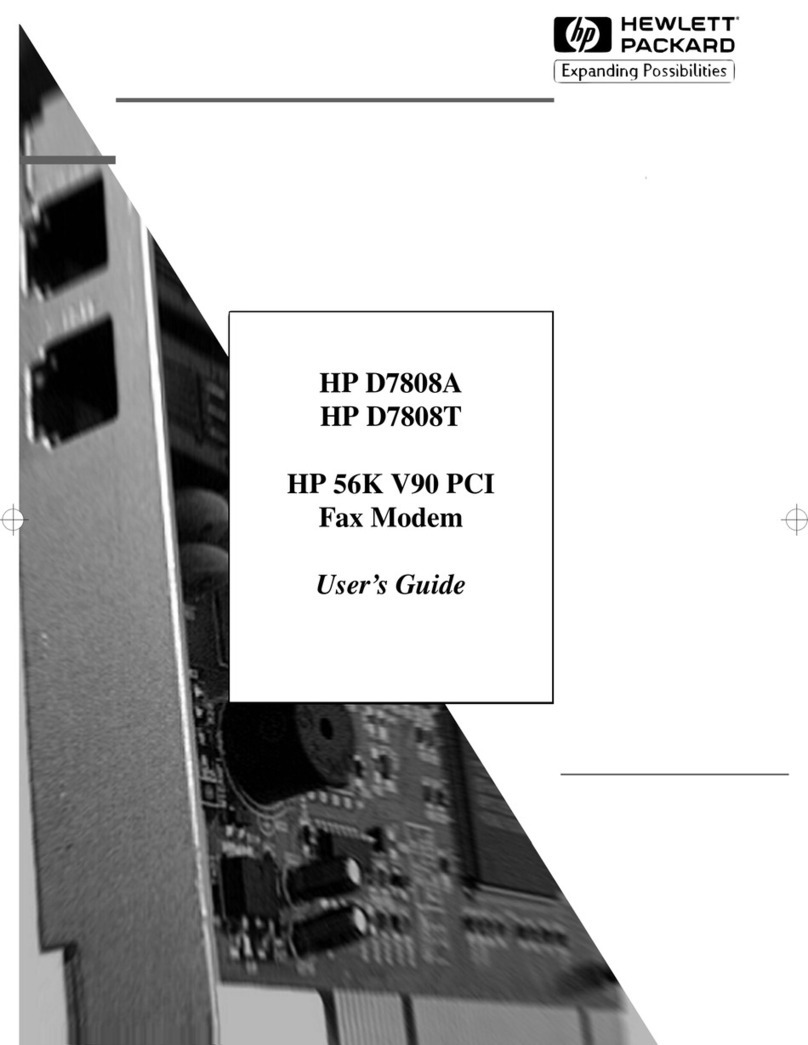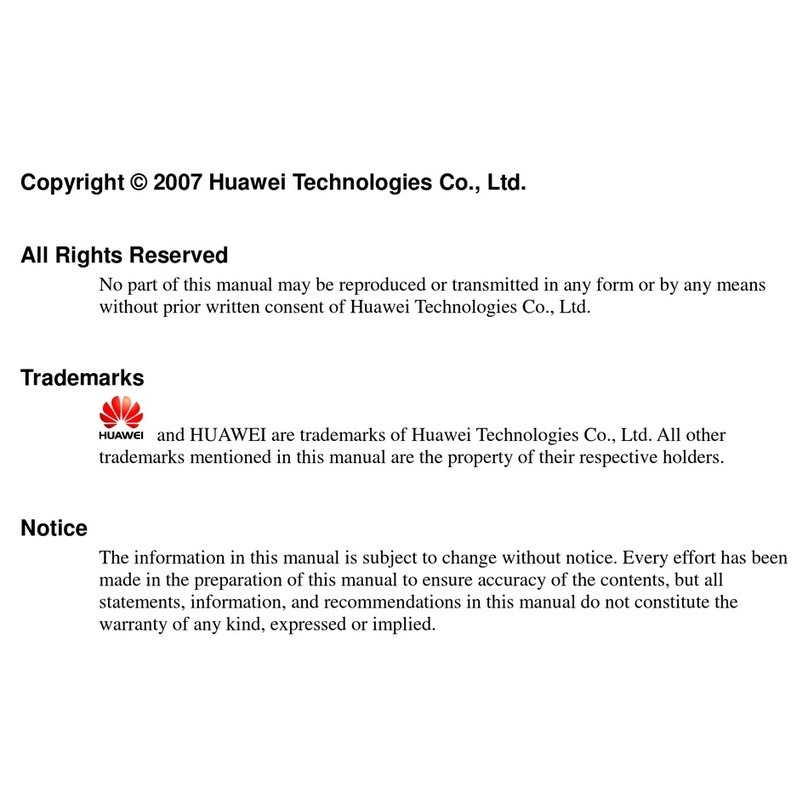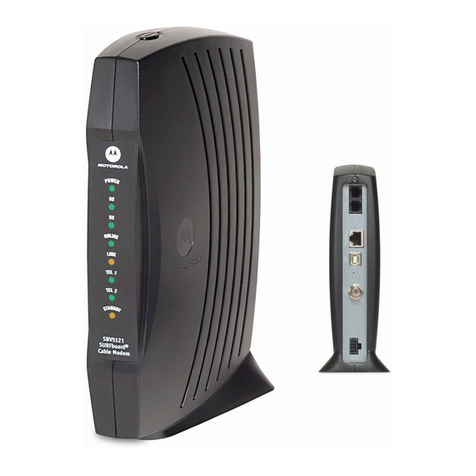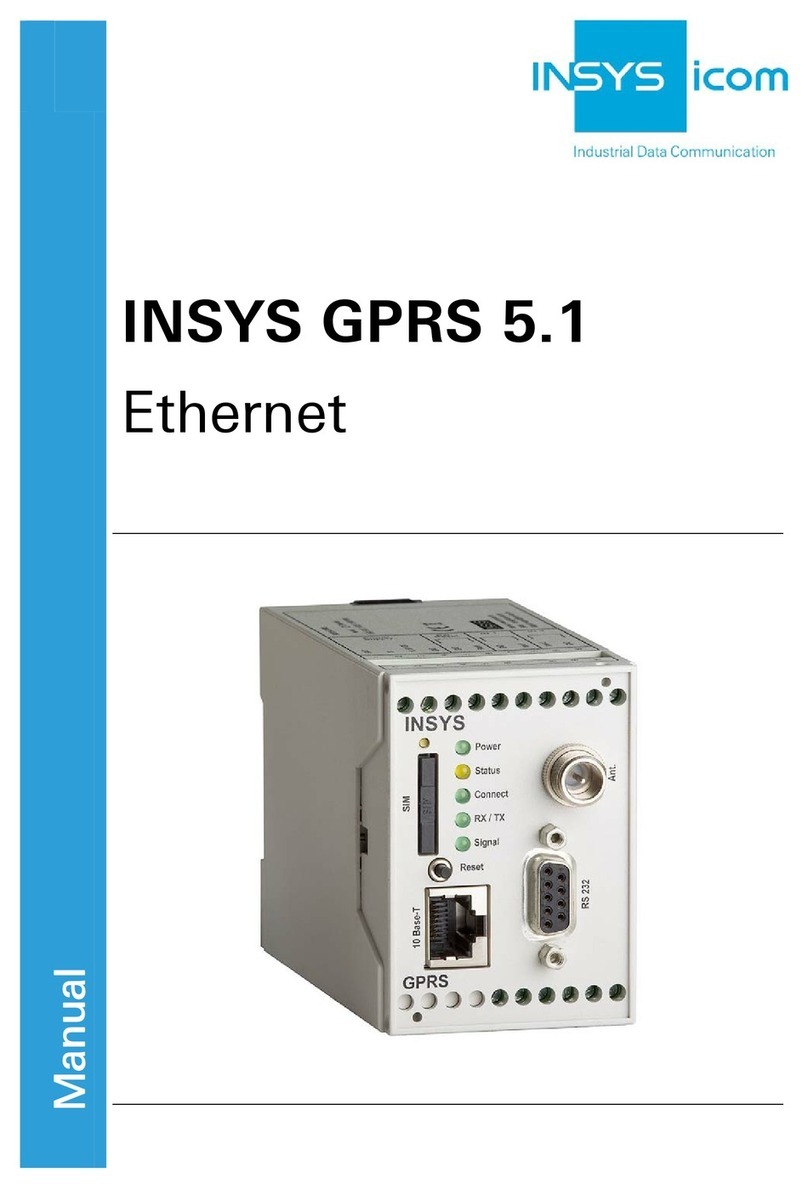Sangamo RIXON TA201C Guide

RIXON
INC.
A
SUBSIDIARY
OF
SANGAMO
WESTON
BULLETIN 5214-200
Issue
2,
January
1981
TA201C DATA MODEM
INSTALLATION AND CONNECTIONS
CONTENTS PAGE
1.
GENERAL
........................
. 1
A.
Introduction....................
1
B.
Unpacking and Inspection
.......
. 2
C.
ODD
Service
Applications
. . . . . . . . 2
D.
Private Line Service
Applications
. . 5
2.
ACCESS
TO
DATA MODEM OPTIONS . 5
A.
Data
Modem
Disassembly
and
Reassembly
...................
.
B.
Option Installation
.............
.
C.
Automatic
Calling Unit Options
...
3.
CONNECTIONS
...................
.
A.
Location Requirements
.........
.
B.
Power Requirements
...........
.
C.
Business Machine Interface
Requirements
.................
.
D.
Telephone Interface Requirements
E.
Data Line Requirements
........
.
4.
TELEPHONE MODIFICATIONS
......
.
A.
Auto-Answer
Inhibit
Modification
..
B.
Modification
of
AE186 Telephone
with
LEDs
for
Operation
with
TA201C Modem
................
.
C.
Exclusion Key Removal Modifica·
tion
for 565
or
2565 Telephone
.....
5
5
6
6
6
12
12
15
15
20
20
21
21
CONTENTS PAGE
D.
Exclusion Key Removal Modifica·
tion
for
AE186
Telephone.........
22
E.
Telephone Buzzer Installation
for
Multiple
Data Modem Configura·
tions..........................
22
5.
INSTALLATION TEST . . . . . . . . . . . . . . .
23
6.
REPAIRING DATA MODEM . . . . . . . . . .
23
7.
REFERENCES.....................
23
8.
CONNECTION
DIAGRAMS...........
26
1.
GENERAL
A.
Introduction
1.01
This section contains eight parts. Part 1
contains information on unpacking and
inspection of the
RIXON®
TA201C. It also
lists
some
of
the data modem uses in a service applica·
tions
table. Part 2 is a detailed description
of
how
to prepare or
option
the data modem
for
particular
applications. Part 3 contains connection require-
ments and description
of
signals on the data
modem connectors. Part 4 contains
modification
instructions
for telephones used in some
of
the
applications. Part 5 contains installation
test
pro-
cedures, Part 6
lists
instructions
for returning
equipment
to
Rixon Inc. Part 7 contains a
listing
of
references. Part 8 is connection and schematic
diagrams.
1.02 This section is being reissued
to
reflect the
following new information:
NOTICE
• Addition
of
new cable information in Table
2-A.
• Addition
of
AE186 telephone information in
Table
2-B.
Not
for
use or
disclosure
to
anyone
but
RIXON
customers, except under
written
agreement.
© Rixon Inc., 1980
Printed in U.S.A. Page 1

ISS.
2,
BULLETIN 5214·200
• Consolidation
of
option Tables
2-D
and
2-E
into
telephone company and user selected
option Tables
2-D
and
2-E.
• Correction
of
numbering
to
S3
and addition
of
note 1to Fig.
2-2.
•
Addition
of
card edge
connector
designa-
tion and signal
type
columns
in Table
2-G.
• Addition
of
card edge
connector
designa-
tion column in Table 2-H.
• Corrections
to
lamp indications in Figs.
2-5
and
2-6.
• Addition
of
AE186 telephone
modifications
in
paragraphs 4.04, 4.05, and 4.07.
• Addition
of
AE186 telephone schematic in
Fig.
2-42.
B.
Unpacking and Inspection
1.03 Inspect the data modem thoroughly after
delivery. If the data modem has been
damaged in transit, please report it
to
the carrier
and
to
Rixon Inc., Customer Engineering Depart-
ment, at
(301)
622-2121
or TWX 710-825-0071. Make
an
operational check after installation is com·
plete. If necessary, verify that
circuit
card connec-
tors are properly seated by
following
disassembly
and reassembly
instructions
in paragraph 2.02
of
this section. Ensure that the ordered mounting
cable is included
with
the data modem.
C.
ODD
Service
Applications
1.04 The TA201 C DOD
switched
network
applications include manual
or
automatic
answering,
compatibility
with
Automatic
Calling
Units
(ACUs), and
multiple
line
installations.
Typical FCC service applications for the
DOD
Switched Network are listed in Table 2-A. Special
applications for privately owned systems
or
appli·
cations which
do
not require FCC registration are
listed in Table 2-B.
NOTE: This data modem
cannot
be
used
with
party
lines
or
coin
lines.
TABLE2·A
FCC REGISTERED APPLICATIONS
APPLICATION TELEPHONE AUXILIARY TRANSMIT RECOMMENDED
TEL
LINE CONN.
TYPE EQUIP. LEVEL CONNECTION INTERCONNECT DIAG.
USED APPLICATION CONFIGURATION CABLE FIG.
usoc NO.
Data and *
500
or
2500; None Permissive RJ11, RJ12,
905-6611-01
voice or t500
or
RJ13, RJ41S, 905-6611-02
only;
or
2500
with
RJ45S Series O
alternate isolated
2-13
voice and hookswitch
905-6611-01
data with
contacts
RJ11
905-6611-02
automatic Series 1
answer RJ11, RJ12,
RJ13,RJ41S
905-6675-01
2-14
RJ45S
Programmable
RJ41
Sor
RJ45S
905-6592-01
2-15
Fixed loss loop RJ41S 905-6592-02
2-16
Page2

ISS.
2,
BULLETIN 5214-200
TABLE 2·A (Cont)
FCC REGISTERED APPLICATIONS
APPLICATION TELEPHONE AUXILIARY TRANSMIT RECOMMENDED TEL. LINE CONN.
TYPE EQUIP. LEVEL CONNECTION INTERCONNECT DIAG.
USED APPLICATION CONFIGURATION CABLE FIG.
usoc NO.
Data only; 500
or
2500 None Fixed loss loop RJ41S 905-6608-02 2-17
or alter-
with
nate voice isolated Programmable
RJ41
Sor
RJ45S 905-6608-01 2-18
and data
hookswitch
with
contacts
Permissive RJ41S,RJ45S,or 905-6609-01 2-19
automatic RJ11W
answer :j:905-6609-02 2-19
RTC
RJ36X Fixed
loss
loop RJ41S 905-6557-02 2-20
Programmable
RJ41
S
or
RJ45S 905-6557-01
2-21
Permissive RJ41S,RJ45S,or 905-6557-03 2-22
RJ16X
565 or2565 None RJ41S,RJ45S,or 905-6414-05 2-23
RJ11W
Programmable
RJ41
Sor
RJ45S 905-6414-03 2-24
Fixed loss loop RJ41S 905-6414-02 2-25
Automatic
None None Permissive RJ41S,RJ45S,or 905-6557-03 2-26
answer RJ11W
only
Fixed loss loop RJ41S 905-6557-02
2-27
Programmable
RJ41
Sor
RJ45S 905-6557-01 2-28
Multiple
Refer
to
Installation and Maintenance Manual
for
the RM40A3 Data Mounting
lines and (Bulletin
5243)
multiple
data
modems
* 500
or
2500 telephone
with
isolated
hookswitch
contacts
may be used in
systems
which
are
subject
to
excessive
startup
errors.
t The 500 or 2500 telephone
with
isolated
hookswitch
contacts
can be used with cables 905-6611-01,
-02,
and 905-6592-01,
-02
Series 1and above only.
:j:
Includes lamp on cable
switch
assembly for data mode indication.
Page3

ISS.
2,
BULLETIN 5214-200
TABLE 2·B
SPECIAL APPLICATIONS FOR PRIVATELY OWNED SYSTEMS
OR
APPLICATIONS WHICH
DO
NOT REQUIRE FCC REGISTRATION
APPLICATION
UTELEPHONE
TRANSMIT AUXILIARY TEL. LINE CONN.
TYPE LEVEL EQUIP. INTERCONNECT DIAG.
APPLICATION USED CABLE FIG.
NO.
Data
with
alternate voice *565, 2565,
Adjustable
None t905-6414-01
2-29
or
AE186 905-6414-04 2-30
Data
with
automatic
answer None t905-4962-01
2-31
only
t905-4962-03
Data
with
automatic
calling
:f:§565,
2565, 801C L1/2 905-6630-01
2-32
and alternate voice
or
AE186 905-6630-04
2-33
Fixed
loss
loop
905-6630-02 2-34
Programmable 905-6630-03 2-35
Permissive 906-6630-05
2-36
**565, 2565,
Adjustable
,801Aor801C
t905-6414-01
2-37
or
AE186 *1498
adapter
and
**D10P
cable
Data
with
alternate voice
for
ttModified
Five-way 905-6414-01
2-38
up
to
five
individually
hous- 565, 2565, adapter and B25A
ed
data
modems
or
AE186 cable
• Telephone can be
modified
per paragraph 4.02
of
this
section
for
auto-answer
inhibit.
t Cable
must
be series 2
or
higher.
:f:
Telephone may be removed in
this
application
if
no voice
communication
is required.
§ AE186 telephone
must
be
modified
per paragraph 4.04
of
this
section.
, 801A is
normally
used
with
rotary dial telephone and 801C is normally used
with
tone dial
telephone.
••
Not
supplied by Rixon Inc.
tt
Telephone
must
be
modified
as per paragraph 4.03 of
this
section.
H Telephones can be
modified
per paragraphs 4.06 and 4.07
for
removal
of
telephone
exclusion
key.
Page4

1.05 Prior
to
installation, the telephone company
must be
notified
of
the intended installa-
tion. The Universal Service Order Code
(USOC)
number for the telephone service jacks are listed
in Table 2-A. One
of
the codes
must
be
specified
for installation by the telephone company. The
FCC.
registration number and ringer equivalence
number (located on label on outside
of
data
modem)
must
also be provided.
NOTE: This data modem
(as
of
the date
of
manufacture) is
compatible
with telephone
company
communications
facilities
with
which
it
was
intended
to operate. However,
if
the
telephone
company
changes
its
communications
facilities,
equipment,
operations,
or
procedures
such
that
this
equipment
is no
longer
compatible, RIXON is
not
responsible
for
the
cost
of
modification
or
replacement
of
the data modem.
1.06 The transmit line level
of
a
TA201
C Data
Modem is determined by
an
internal adjust-
able attenuator and by a resistance connected
across programming pins
18
and
19.
A series
of
different telephone interface cable assemblies
allows the data modem to be applied
to
different
level setting arrangements:
• Adjustable (for applications not requiring
FCC registration) -uses cable
with
jumper
between pins
18
and
19.
Transmit level is
set by internal attenuator.
• Fixed loss loop -uses cable
with
866
ohms resistance between pins
18
and
19.
Transmit level is
-4
dBm maximum.
• Permissive -uses cable
with
9310 ohms
and resistance between pins
18
and
19.
Transmit level maximum is
-9
dBm.
• Programmable -uses cable
with
leads
from pins
18
and
19
to
connect to
resistance
built
into telephone company
supplied interconnection point.
NOTE: When
either
fixed
loss
loop, permis-
sive,
or
programmable level
setting
applica-
tions are used, the data modem
internal
attenuator
must
remain in factory
set
O dBm
position.
Doing
otherwise
adds
additional
attenuation
to
transmitted
signals.
ISS.
2,
BULLETIN 5214-200
D.
Private Line Service
Applications
1.07 The TA201C
_Data
Modem
service
applications for private line operation are
listed in Table
2-C.
2.
ACCESS
TO
DATA MODEM OPTIONS
2.01
The data modem is equipped
with
a number
of
options
that can be selected at the instal-
lation site
without
test
equipment or
tools
other
than a screwdriver. Option selection is determin-
ed
by the servicing telephone company and
customer. Telephone company selected
options
for private line and
ODD
network applications are
provided in Table
2-D.
User selected
options
for
p_rivat~
line and
DOD
network applications are pro-
vided
in
Table
2-E.
Read
the description
of
each
option before installing; many are interrelated.
A.
Data Modem Disassemblyand Reassembly
2.02
It is necessary to remove data modem
circuit
cards from the desk-top enclosure
to
inspect
or
install options. Use Fig.
2-1
and the
following procedure:
(a)
Use a flat-blade screwdriver
in
access slot
on bottom
of
bezel
to
pry card assembly
from case. Loosen and
disconnect
assembly
from rear housing connector.
R
E
A
D
Never use force while removing assem-
bly from case because damage may
re-
sult. Handle assembly by front panel
and card edges only. Static changes
may damage ICs.
(b)
Slide
card
assembly
from
case
while
gripping front panel. Set card assembly on a
nonconductive surface. Card assembly con-
sists
of
three
circuit
card layers separated by
nylon spacers.
(c)
Options
are
accessible
at card edges
between
circuit
card layers.
B.
Option Installation
2.03 Determine the correct option
positions
for
the particular data installation then refer
to
Fig.
2-2
for option locations and Tables
2-D
and
Pages

ISS. 2, BULLETIN 5214·200
TABLE2·C
PRIVATE LINE SERVICE APPLICATIONS FOR TA201C
APPLICATION TEL. SET DAS DAS MOUNTING CONN. DIAG.
USED USED HOUSING CORD
FIG.NO.
Two-or
None None None *905-4962-01,
2-8
four-wire
-02,
-03
Four-wire None C829 DM44A1/T *905-6399-01
2-9
with
ter-
minal
board
DM44A1/T 905-6277-01
2-10
with
connectors
DM44R2 Refer
to
Installation
and Maintenance
Manual
for
connec-
tors
(Bulletin 5270).
Multiple
Refer
to
Installation and Maintenance Manual
for
four-wire RM40B1A Data
Mounting
(Bulletin 5220).
Alternate Refer
to
Installation
and Maintenance Manual
tor
voice RM46A1(Bulletin5328) and RM46B1(Bulletin5215)
four-wire Data
Mounting.
Alternate voice
Modified
565, C829 and C48A
1,
DM45R1 905-6277-01
2-11
or
dial backup 2565,
or
AE186
orC829
and
four-wire C48B1
Alternate voice C829, C48A1
and dial
backup
and
C48B1
*
Must
be series 2
or
later.
2-E
for
switch
settings.
To install selected
options
remove the data modem
circuit
card assembly
from the enclosure. Locate appropriate
switches
or
straps between card layers, and set
options
to
applicable
positions.
C.
Automatic Calling Unit Options
2.04 An
801
ACU may be used when the T
A201
C
Data Modem is
configured
for
two-wire
operation. Certain ACU
options
are required
with
Page6
DM45A1
2-12
the
TA201C Data Modem. Refer
to
Table 2-F
for
ACU
option
information.
3.
CONNECTIONS
A.
Location Requirements
3.01
The data modem
must
be
physically
located
within
the
length
of
customer-supplied
interface cable required
to
connect
business
machine
to
the data modem. Fig.
2-3
provides
the
data modem
dimensions
required
for
installation.

FEATURE
Transmit
line
signal
level
Use
with
DAS 828/
829type
OPTION
Signal range
Oto-15dBm.
Switch
S3
attenuates
transmit
sig-
nal
the
sum
total
of
all
toggle
switch
posi-
tions
Yes
No
4-Wire In
local ana-
log line
loopback
(+16dB)
Satellite
option
Out
In
TABLE
2-D
TELEPHONE
COMPANY
SELECTED
OPTIONS
GENERAL DESCRIPTION WECO DESIG
DOD
PL
0
dB
setting
is
recom-
mended in private line
installations
using
a
DAS829 and in regis-
tered
DOD
installations.
During
facility
loopback
test, DAS829
indicates
to
the
terminal
that
data
modem
is in not-in-data
mode.
Data Set Ready indica-
tion
to
terminal
is con-
trol
led
by
the
data
modem.
Enables data
modem
to
loop
four-wire
tele-
phone line via a 16
dB
amplifier
when in
the
analog
loopback
test
mode. Recommended
for four-wire private line
configurations.
Disables four-wire
line
loopback.
**OdBm
N/A
N/A
N/A
N/A
Inhibits
Request
To
**YQ
Send
signal
at
the
called data
modem
for
275
ms
after
the end
of
answer
tone. Delay in-
terval
allows
echo
sup-
pressors
which
were
disabled
by
answer
tone
frequency
to
enable.
Recommended in DOD
satellite
links.
*OdBm
*YI
YJ
*
N/A
ISS.
2,
BULLETIN
5214-200
SWITCH OR
JUMPER
POSITION
0 0 0 0
1 2 4 8
=
-9dBm
S1-3D
S1-3U
S2-2D
S2-2U
S5-4D
LOCATION
S3on
analog
(middle)
card
S1
on
main
(bottom)
card
S5on
digital
(top)
card
Page7

ISS.
2,
BULLETIN 5214-200
TABLE
2-D
(Cont)
TELEPHONE COMPANY SELECTED OPTIONS •
FEATURE OPTION GENERAL DESCRIPTION WECODESIG SWITCH
OR
LOCATION
JUMPER
DOD
PL
POSITION
Satellite Out Request To Send signal
YR
N/A
S5-4U
S5on
option
at called data modem is
digital
(cont)
not
inhibited.
(top}
card
(cont)
Ground- Signal Ties signal ground
to
**YK
*YK Screw
switch
Screw
ing
option
ground con- the metal case (frame closed
switch
nected
to
ground)
of
the
data
on rear
frame modem. Used
to
reduce panel
ground
longitudinal
noise from
the power line.
Signal Isolates signal ground YL YL Screw
switch
ground not from frame ground. open
connected
to
frame
ground
*
FactorysettingtorTA201CL1D.
**
Factory
setting
forTA201C L1C/D. •
TABLE
2-E
USER SELECTED OPTIONS
FEATURE OPTION GENERAL DESCRIPTION WECODESIG. SWITCH
OR
LOCATION
JUMPER
DOD
PL
POSITION
Data modem 2-Wire PL Selects two-wire private N/A -tE5-E6,
E7-E8,
Main
configuration
line operation. Enables S1-2D, S2-1D (bottom)
the
functions
which
are card
normal
for
two-wire pri-
vate line
configuration.
4-Wire PL Selects tour-wire private N/A *-tE5-E6,
E8-E9,
line operation. Enables S1-2D,
S2-1
U
the
functions
which
are
normal
tor
tour-wire pri-
vate line
configuration.
Pages

•
--
•
FEATURE
Data
mode~
configura-
tion ·
(cont)
Function
of
EIA inter-
face pin
18
Automatic
answer
;DSRin
analog
loopback
Transmitter
timing
OPTION
kL
~
2-Wire
DOD\
r-.
_./
Initiates
local analog
loopback
Provides
receive sym-
bol clock
DTRcontrol
only
Not provided
DSRon
DSRoff
Internal
External
ISS.
2,
BULLETIN
521.4-200
TABLE
2·E
(Cont)
USER
SELECTED
OPTIONS
GENERAL
DESCRIPTION
Selects
two-wire
DOD
switched network opera-
ti
on. Enables the func-
tions which
are
normal
for two-wire
DOD
switch·
ed
networkconfiguration.
Enables analog loopbac!<
when
Data
Terminal
Equipment
(DTE)
connec-
tor pin
18
is raised
to
a
positivevoltage.
Applies
dibit
receive
clock
to
DTE
connector
pin
18.
Data modem will auto-
matcally
answer
data
calls
if
Data
Terminal
Ready lead
(CD)
is on.
Normally used
to
provide
unattended answering.
Disables
automatic
answer.
Data Set
Ref,ldy
is not
inhibited in analog loop-
back
mode. Used
for
analog loopback testing
through
data
terminal
equipment.
Data Set Ready
off
in
analog loopback mode.
Data modem
provides
serial clock via internal
crystal controlled oscilla-
tor.
Customer provides serial
clockvia
SCT
lead on
DTE
interface. Useful in time
divisjon multiplexing and
digital repeater applica-
tions.
WECODESIG.
SWITCH
OR
LOCATION
JUMPER
DDD
PL
POSITION
.....
. . .
""'.
v·
N/A
E4-E5,
E7
·E8,
·Main
S1-2U,
S2-1U
~-
~~tom)
t-~·-·-···--
--
........................-(cont)
vs vs
E1-E2
·-..
~I
*YT
~E2~1=3\
~'-
e; VS1-4U
""'
N/A
----
YE
N/A
S1-4D
**
*YN
S1-5D
**YC
~
'
S4-6U,
$4-80
I'----'
YD YD
S4-6U,
S4-8U
S4on
digital
(top)
card
Page9

ISS.
2,
BULLETIN 5214·200
TABLE 2·E (Cont) •
USER SELECTED OPTIONS
FEATURE OPTION GENERAL DESCRIPTION WECODESIG. SWITCH OR LOCATION
JUMPER
DOD
PL POSITION
Transmitter
Controlled Internal
transmit
clock
is -WI S4-60, S4-8U
S4on
timing
by receiver phased locked
to
internal
digital
(cont)
bit
clock
received
serial
clock
(top)
providing a system
clock
card
that is synchronized be- (cont)
tween data modem in-
coming
and
outgoing
data. Typically used at
remote
stations
in
multiplex
applications.
~~
~
Abort
timer
In
Data
modem
automati·
(
v
IJ
N/A
!'--..
S2-3U
.S2 on
cally drops line
after
20
t'------ / main
seconds ±4
seconds
if
(bottom)
data modem does not card
receive
a
Request
To
Send
or
has not detected
carrier.
Out Disables abort timer.
**
-N/A
~
•
Telephone Use500/565 Required in standard con-
**
-
N/AG
s~_)
type telephone
figurations
which
do not
use
RTC
telephone.
v-·
~-···-~---"-J
(/;~~
FCCRTC Only required in
config:;~
( N/A (
arrangement urations
which
use
RTC
' /
·--
telephones.
!''
....
---
·xE
""""
4-Wire type
Switched
Allows
data modem
to
N/A ·s1-1 D
S1
on
operation
carrier?
ms
transmit
only
when
Re-
r--
~
main
and CTS CTS delay
quest
To Send signal is (bottom)
delay on
from
the
terminal. Pro- card
vides 7
ms
Clear To Send
delay. Typically used on
S4-1
D,
S4-2U,
S4on
polling
system
remote
S4-5U
digital
stations. (top)
card
Continuous
Sets internal Request To
N/A
XB
S4-1
D,
S4-2U,
carrier?
ms Send signal on
so
that
the
S4-5D
CTS delay
transmitter
stays on con-
tinuously. Provides 7 ms S1-1D
S1
on
Clear
To
Send
delay.
main
Typically used on
polling
(bottom) •
system masterstations. card
Page10

ISS.
2,
BULLETIN 5214-200
•
TABLE
2·E(Cont)
USER SELECTED OPTIONS
FEATURE OPTION GENERAL DESCRIPTION WECODESIG. SWITCH OR LOCATION
JUMPER
DDD PL POSITION
4-Wire type Continuous Allows data modem
to
N/A
XC
S1-1D
S1
on
operation carrierO ms transmit data only when main
and
CTS
CTSdelay Request ToSend signal is (bottom)
delay on from the terminal and card
(cont) provides O ms Clear To
Send delay.
Typically
S4-1
D,
S4-2D,
S4on
used on
point-to-point
S4-50 digital
systems. (top)
card
2-Wire type Switched Allows data modem
to
**
-
XE
S4-1U,
S4-2U,
operation carrier
150
transmit
only
when
S4-5U
and
CTS
msCTS RequestTo Send signal is
delay delay on from the terminal. Pro·
S1-1U
S1
on
vides
150
ms
of
Clear To main
Send delay. Recommen- (bottom)
ded in
two-wire
DOD
card
switched network appli-
• .cations.
Continuous In Provides a
continuous
YO YO
S4-3U
S4on
receiver bit receiver bit clock signal digital
clock
of
2400
bps
on
DTE
con- (top)
nectorpin
17
card
Ouf Provides receiver
bit
**VP *VP S4-30
clock signal only when
receiving carrier signal.
New sync Under
Permits
squelching
of
N/A
YB
S4-40
customer receiver clock recovery
control system at the end
of
a
message. Typically used
in polling system master
stations.
Not used New .
sync
option
is N/A *YA
S4-4U
disabled
for
normal
operation.
Page
11

ISS.
2,
BULLETIN 5214·200
TABLE
2·E
(Cont)
USER
SELECTED OPTIONS
FEATURE
Antistream
control
OPTION
Used with 3
second
delay
Used with
27
second
delay
Not used
GENERAL DESCRIPTION
Request To Send is inter-
nally inhibited after3 sec-
onds
of
continuous
Re·
quest To Send on con-
dition. Option automati-
cally
resets
when
Re-
quest To Send is
in
the
off
condition. Typically
used
in
polling system
remote stations.
Request To Send is inter-
nally inhibited after
27
seconds
of
continuous
Request To Send on con-
dition. Option automati-
cally
resets
when
Re-
quest To Send is in the
off
condition. Typically
used in polling system
remote stations.
Antistream
not
used.
Request To Send is not
inhibited. Typically used
in point-to-point and poll-
ing system master sta-
tions.
* Factory setting forTA201C L1
D.
**
Factory setting forTA201C L1C/1D.
t
E5-E6
permanently strapped on
TA201
C L1
D.
:j:
On
series 1and higherdata modems.
WECODESIG.
DOD
PL
N/A
NIA
N/A
*
SWITCH OR
JUMPER
POSITION
LOCATION
S5-1
D,
S5-2D
S5
on
digital
(top)
card
S5-1
D,
S5-2U
S5-1U
B.
Power Requirements
3.02
A standard three-wire
grounding
power
receptacle is required to provide
ac
power
for the data modem. Refer
to
the specifications
table in the Description and Operation section for
the power specifications. This power receptacle
should not be controlled bya switch.
panel. When
an
801
Automatic Calling Unit
(ACU)
is used with the data modem; data modem,
business machine, and
ACU
grounds must all
be
served from the same ac distribution panel.
3.03 To avoid possible errors due to potential
difference between grounds for the data
modem and business machine, the power recep-
tacles for the data modem and business machine
must be served from the same
ac
distribution
Page
12
C.
Business Machine Interface Requirements
3.04
The interface cable must not be more than
50
ft
(15m)
long. It
must
be
equipped with a
25-pin Cinch
or
Cannon connector (DB-19604-432
or equivalent)
to
mate with the data modem con-
nector labeled
DTE
J1. Table
2-G
identifies and
describes the signals
on
the interface connector
pins. Unused pinsare not shown.
•

FRONT
PANEL
55
Fig. 2·1. Data Modem Assembly
DIGITAL
CTOPl
CARD
DOWN
t
ANALOG
CMIDDLE)
CARD
UP
MAIN
CBOTTOM)
CARD
DIGITA.L (TQP)
CARO
ANALOG
(MIDDLE)
CARD
MA
IN [
BOTTOMJ
CARD
&
NOTE:
ISS.
2,
BULLETIN 5214·200
53
~EB
~
E9
&
E5
&
EB
@
E4
@
E7
80052-0
FRONT
PANEL
fil
~~~~l~E~o~~r~6N
8
\H~U~LJ1r6°HE~N~R~
10
~o?RFUTNH2r1~~~i~·
IN
79257-2
Fig. 2·2. TA201 C Option Locations
Page 13

ISS.
2,
BULLETIN 5214-200
TABLE 2·F
801
ACU OPTIONS USED WITH TA201C DATA MODEM
OPTION DESCRIPTION OPTION DESIGNATIONS REQUIREMENT
801C L1/2 801A6 801C4
Mounting
cord 13-conductor *M13G t t Use
only
specified
Mounting
cord 10-conductor t M M
options
ACU answer
detection
or
end
of
number
code B B B
Detect end
of
answertone w w w
Detect 2025-Hz answertone s s s
DLO
controlled
by
ACU
* * ZM
Data modem
to
data mode by grounded con-
ZG ZG ZG
tact
Isolated TK
contact
ZAout
:t:ZA :t:ZA
No
clearsignal, no TK
contact
ZN
t t
Two-wire operation * *
ZH
Ground start (two-wire) v * v
Telco
selects
Loop
start
y t y one
Short loop (under 400 ohms) t
ZU
out
t Tel
co
selects
Long
loop
(over 400 ohms) t
ZU
in t one
Stop
ACR
timer
when
DSS
goes ON R R R
Customer
selects
Do not
stop
ACR
timer
when
DSS
goes ON H H H one
Terminate call via data modem
after
DSS
goes G G G
Customer
ON (line
transfer
in test)
selects
one
Terminate call via CRQ
after
DSS
ON (line z z z
transfer
7-sec ACR
timing
ZQ
Screwdriver
adjust
Customer
selects
14-sec ACR
timing
ZR
one
28-sec ACR
timing
ZS
56-sec ACR
timing
ZT
Page 14

ISS.
2,
BULLETIN 5214-200
TABLE 2·F (Cont)
801
ACU
OPTIONS
USED
WITH TA201C DATA MODEM
OPTION DESCRIPTION OPTION DESIGNATIONS REQUIREMENT
801C L1/2 801A6 801C4
Terminal
contact
interface t
ZE
t
Customer
selects
Terminal voltage interface *
ZF
* one
SG
connected
to
FG
zu
Strap in
Customer
selects
SG
not
connected
to
FG
zv
Strap
out
one
* Factory wired.
t
Not
available.
:f:
TK contacts are not used by data modems connected
to
801A6 and 801C4 ACUs. Option is
specified
to
provide
uniformity
of installations.
l'-c::..:·~
-_-_)
..--..-1_~
~-........=::::r'.I
I_
-(~.
2
....I....._1}~___.:.i
~
=
L
5.751N.
I L
11.271N.
(14.6
CM)--....!
,.._
_________
(28.6 CM)
---------..i
78040·0
Fig. 2·3. Installation Dimensions
D.
Telephone Interface Requirements
3.05 The private line version
of
the telephone
interface cable requires a maximum
of
six
conductors, while the switched network version
requires a 15-conductorcable terminated in a con·
nector
to
mate
with
the 565 telephone. Table
2-H
identifies and describes the signals on the pins
of
the data modem telephone
connector
labeled
TEL/LINE
P1.
Unused pins are not shown. Table
2·1
lists
resistor
Rp
values
to
be connected between
pins
18
and
19
of
the telephone interface connec-
tor
for programmed transmit levels.
E.
Data Line Requirements
3.06 To avoid
interference
during
data
transmission,
use
only
individual
data
(telephone) lines and do
not
connect extension
telephones.
To
minimize inductive interference
to
the data signals, data lines should not be carried
in the same cable run
with
cables between data
modems and business machines or
with
lines
connected
to
DC
teletypewriter services. If
this
requirement cannot be met, run data lines in
shielded
(SK)
station wire between the data
modem and cable
distribution
terminal
or
building
entrance. The shield should be terminated on one
end only, perferably the
distribution
terminal end.
Page 15

ISS. 2, BULLETIN 5214-200
TABLE2·G
DATA
TERMINAL
EQUIPMENT
CONNECTOR
SIGNALS
*CUST. INT.
CONN.PIN
NUMBER
(RS·232·C
DESIG.)
1(AA)
2 (BA)
3 (BB)
4(CA)
5 (CB)
Page 16
CARD EDGE
tSIGNAL
CONN.
TYPE
DESIG.
B Ground
C Data
D Data
E Control
F Control
SIGNAL
FROM
Terminal
Data modem
Terminal
Data modem
CCITT
DESIG.
101
103
104
105
106
DESCRIPTION
Frame ground connected
to
data
modem
housing
and
local
power
ground through third
conductor
in
power cord. Also connected
to
signal
ground through an option. See pin
7.
Business machine transmits positive
and negative voltages to data modem
on
this
lead, using positive transitions
of
serial
clock
transmit as
an
indica·
tion
of
when
to
change data bits. Volt·
age levels should be in accordance
with
RS-232-C.
Data received from telephone line is
converted
to
positive and negative
voltages
which
are
presented
to
business machine on positive transi·
tions
of
serial
clock
receive. Polarities
on
this
lead agree
with
those on Send
Data lead
of
distant
transmitter.
Received Data is clamped negative
when CarrierOn signal is off.
Signals on this lead are generated by
business machine to turn on local
data modulator. Request To Send
must
be held high as long as data
needs
to
be transmitted. Request To
Send is overridden in all test modes
except analog loopback.
Signals present on this lead are
generated by local data modem
to
indicate
to
business machine that it is
ready to transmit data.
ON
condition
of
Clear To Send is in response to an
ON
condition
of
Request To Send.
RS-CS
time
interval may be adjusted
to
0 ms, 7 ms,
or
150
ms
through
various options. Clear To Send goes
off
with
essentially no delay when
Request To Send is turned
off.

*CUST. INT.
CONN.PIN
NUMBER
(RS·232·C
DESIG.)
6(CC)
7 (AB)
8
(CF)
9 (+
P)
10
(-P)
14(NS)
15(DB)
16(-)
CARD EDGE
CONN.
DESIG.
H
J
K
8
7
A
M
v
ISS. 2, BULLETIN 5214-200
TABLE
2·G (Cont)
DATA
TERMINAL
EQUIPMENT
CONNECTOR
SIGNALS
tSIGNAL
TYPE
Control
Ground
Control
Test
point
Test
point
Control
Clock
Clock
SIGNAL
FROM
Data
modem
Data
modem
Data
modem
Data
modem
Terminal
Data
modem
Data
modem
CCITT
DESIG.
107
102
109
118
114
119
DESCRIPTION
Provides an ON
indication
to
business
machine
when data
modem
is
in
data
mode
and
is
capable
of
transmitting
or
receiving data.
NOTE: An ON
indication
should
not
be interpreted
as
an
indica·
tion that a communication chan·
net has been established to a
remote station.
Establishes
common
ground refer·
ence
for
all
interface
leads. Is con-
nected
to
frame
ground
at
power
sup-
ply. Can be
disconnected
if
desired by
customer.
Indicates
to
business
machine
that
data
signals
are being received by
data modem.
+ 12
volts
for
telephone
company
testing
-12
volts
for
telephone
company
testing.
In
some
arrangements,
business
machine
may use
this
lead
to
quench
data
modem
receiver
clock
to
prepare
data
modem
receiver
for
a new mes-
sage.
At
end
of
a received message,
if
customer
wishes
to
quench
slowly
de-
caying
timing
signals
in
the
receiver,
new sync lead
should
be pulsed
on
for
at least 1 ms. New
synch
lead may be
inhibited
by an
installer
option
when
it
is not desired.
Transmitter
bit
rate
clock,
a
squarewave
of
2400 Hz.
A squarewave at one-half the
bit
rate
(1200 Hz) appears on
this
lead. Transi-
tions
of
this
lead
coincide
with
posi-
tive
transitions
of
Serial
Clock
Transmit
lead.
Page 17

ISS. 2, BULLETIN 5214-200
TABLE
2-G
(Cont)
DATA
TERMINAL
EQUIPMENT
CONNECTOR
SIGNALS
*CUST. INT.
CONN.
PIN
NUMBER
(RS·232·C
DESIG.)
17(DD)
18(-)
20
(CD)
22
(CE)
24 (DA)
CARD
EDGE
tSIGNAL
CONN.
TYPE
DESIG.
L
Clock
1
Clock/
Control
3
Control
4
Control
10
Clock
•
Unused
pins
not
shown.
SIGNAL
FROM
Data
modem
Data
modem/
Terminal
Terminal
Data
modem
Terminal
CCITT DESCRIPTION
DESIG.
115 Provides a squarewave
timing
signal
which
is used
for
clocking
received
data.
This
timing
signal
is
at
the
bit
rate (2400
Hz).
Negative
transitions
of
this
signal
are used by
business
machine
to
sample
signals
appearing
on Receive Data lead. It is
clamped
positive
when carrier
detector
is
off
and when
transmitter
timing
option
is
set
for
controlled
by receiver
bit
clock.
-
Determined
by
option
YS/YT. When
option
YT is
selected
a 1200 Hz
square-wave
clock
used
internally
by
the
data
modem
appears on pin 18.
When
option
YS
is
selected,
pin 18
becomes
an
input
for
an
externally
activated
analog
loopback
test. An ON
voltage
initiates
analog
loopback
and
lights
data
modem
TM lamp.
108/1 Used by data
modem
line
control.
Data
Terminal Ready
must
be on before
entering
data
mode, and
off
at
least 10
ms
to
terminate
call
while
in
data
mode. When
data
modem
operates
on
private
line
facilities,
Data
Terminal
Ready
is
not
used by
data
modem.
125 During EIA
interface,
signals
on
this
lead
indicate
that
ringing
signal
is be·
ing received on
telephone
channel.
Furnishes
bit
rate
timing
to
trans-
mitter
from
business
machine
for
externally
timed
data
modems.
t
Control
and
Clock
signals: On = +3
to
+25
V;
Off
=
-3
to
-25
V.
Data signals: binary 0 =space = +3
to
+25
V;
binary
1 =mark =
-3
to
-25
V.
Page 18

TEL/LINE LEAD
P1
DESIGNATION
CONN.
PINNO.
1 L
2
-12
3
+5
4
LG
5
TD
7 T
8 R
9
OT
10
DR
11
TEK6
12
ANG
13 TEK5
14 c
16 01
18
PR
19
PC
20 +
12
ISS. 2, BULLETIN 5214-200
TABLE
2-H
TELEPHONE/LINE
CONNECTOR
SIGNALS
CARD EDGE
CONN.
DESIG.
w
R
21
16
s
y
x
15
14
18
20
19
T
u
22
z
0
DESCRIPTION
Data modem provides
contact
closure
to
-12
V
through
75
ohms
by
either
ring
or
data relay.
Normally
used
to
control
telephone
line
lamp
in
associated
telephone.
-12-volt
power
to
telephone
or
external units.
+5-volt
power
to
telephone
or
external
units
Connected
to
signal ground in data modem.
Normally
used
to
provide return path
for
telephone
line lamp in
associated
tele-
phone.
Normally
talk-data
control
from telephone. An
input
to
data
modem,
this
circuit
responds
to
open
circuit
which
gives data
mode
and
contact
closure
to
ground
that
provides
talk
mode.
Four-wire
transmit
pair
or
two-wire
transmit/receive
pair.
Four-wire receive pair.
Normally
used
for
Data Set Ready
control
from 828
or
829 DAS.
Connected
to
signal ground in data modem.
Contact
closure
to
ground
during
ringing. Open
circuit
at
all
other
times.
Normally
used as external
control
for
Data Set Ready from
equipment
such
as 828
or
829 DAS. Open
circuit
turns
off
Data
Set Ready.
Contact
closure
to
ground
gives Data Set Ready on
indication.
Normally
contact
closure
indication
to
828
or
829 DAS. Data
mode
relay in data
modem
gives
contact
closure
to
ground
on
this
lead when in data mode. Open
circuit
at all
other
times.
Input
to
data
modem
from
external
equipment
such
as
801
ACU.
Contact
closure
to
ground
controls
this
input.
Used in programmable
applications.
Programming
resistor
Rp
connected
between
pins
18 and 19
controls
transmit
level
circuits.
See Table
2-1
for
Rp values.
+
12
volt
power
to
telephone
or
external units.
Page 19

ISS.
2,
BULLETIN 5214-200
TABLE
2-H
(Cont)
TELEPHONE/LINE CONNECTOR SIGNALS
TEL/LINE LEAD CARD EDGE DESCRIPTION
P1
DESIGNATION CONN.
CONN. DESIG.
PINNO.
21
T1
15
Leads extended from tip and ring
to
interconnect
with
telephone
22
R1
14
network
to
allow alternate voice-data operation.
23
A
18
Data modem provides contact closure between A and A1
to
indicate that data modem or associated telephone is holding line.
Leads are open at all other times. Indication is provided for
KTU
on
ACU
equipment.
24
A1
19
See pin
23.
4.
TELEPHONE MODIFICATIONS
4.01
In
some applications
it
may be necessary
to
modify
the
multiple
line telephone. The
following procedures are
for
modifications
which
are referred
to
in the service application tables
and connection diagrams. Figure
2-4
may be used
for terminal locations in the 565 telephone.
A.
Auto-Answer
Inhibit
Modification
4.02
When automatic answer is required the data
modem
is
normally optioned for permanent
automatic answer. However, the
multiple
line
telephone can be modified
to
provide auto-answer
inhibit
in single line applications.
4.03
Modify
the 565 or 2565 telephone
as
follows:
(a)
Remove telephone set cover by removing
two slotted screws in front and rear
of
base
plate.
(b)
Disconnect orange-white lead from terminal
1B (see Fig.
2-4)
and
connect
to
terminal
N.
Page
20
(c)
Reinstall dial assembly and telephone set
cover.
(d)
Mark base
of
telephone MODIFIED FOR
TA201
C/T201
C/T202S AUTO-ANSWER IN-
HIBIT.
(e)
Verify
proper
data
modem
automatic
answeroption is installed.
4.04
Modify
the AE186 telephone as follows:
(a)
Remove telephone cover by removing
two
slotted screws at the front
of
the baseplate
and one slotted screw at the rear
of
the
baseplate.
(b)
Disconnect orange-white lead from terminal
1
Band
connect
to terminal
N.
(c)
Reinstall telephone cover.
(d)
Mark base
of
telephone MODIFIED FOR
TA201 C/T201 C/T202S
AUTO-ANSWER
INHIBIT.
(e)
Verify
proper
data
modem
automatic
answer option is installed.
Table of contents
